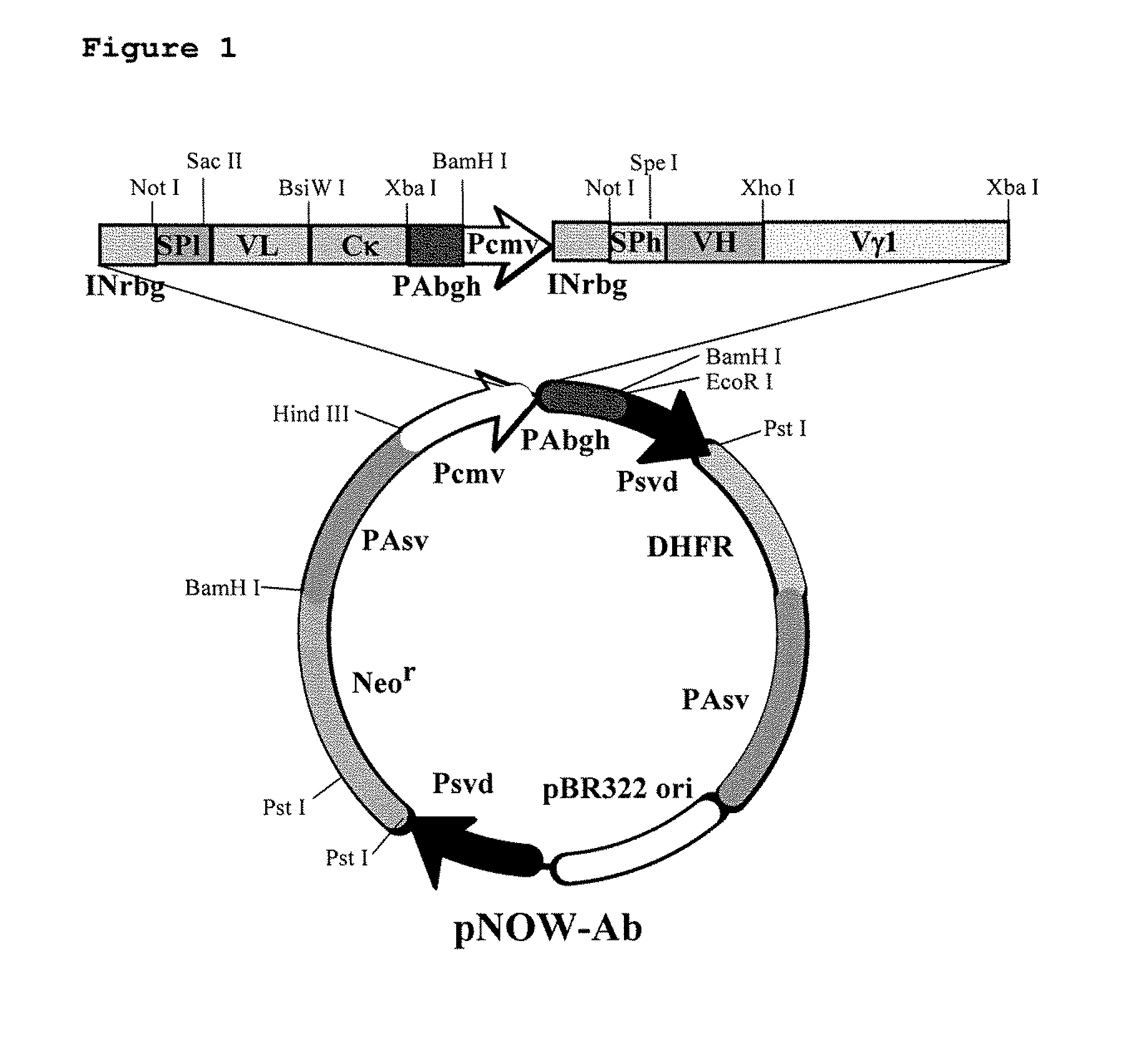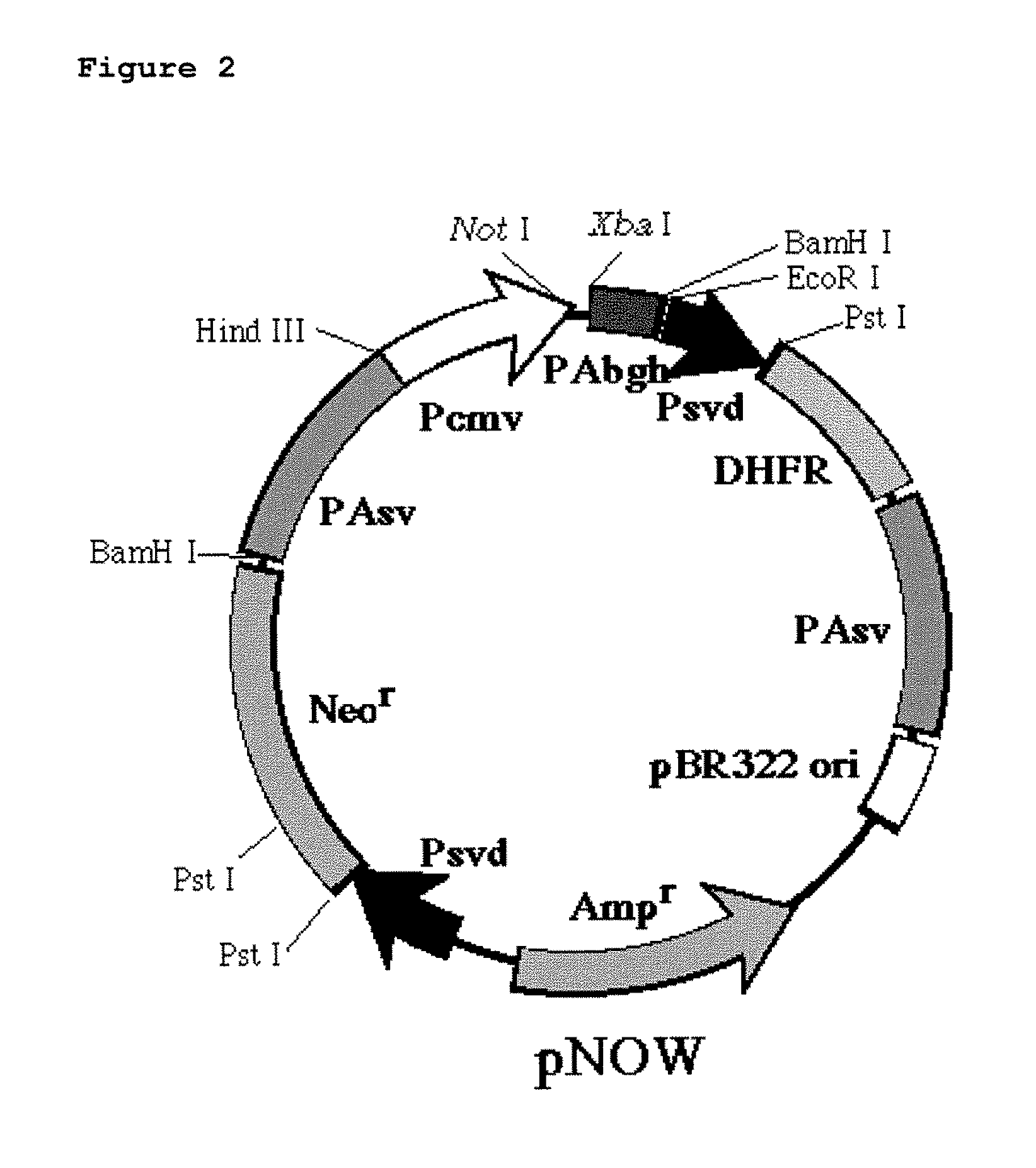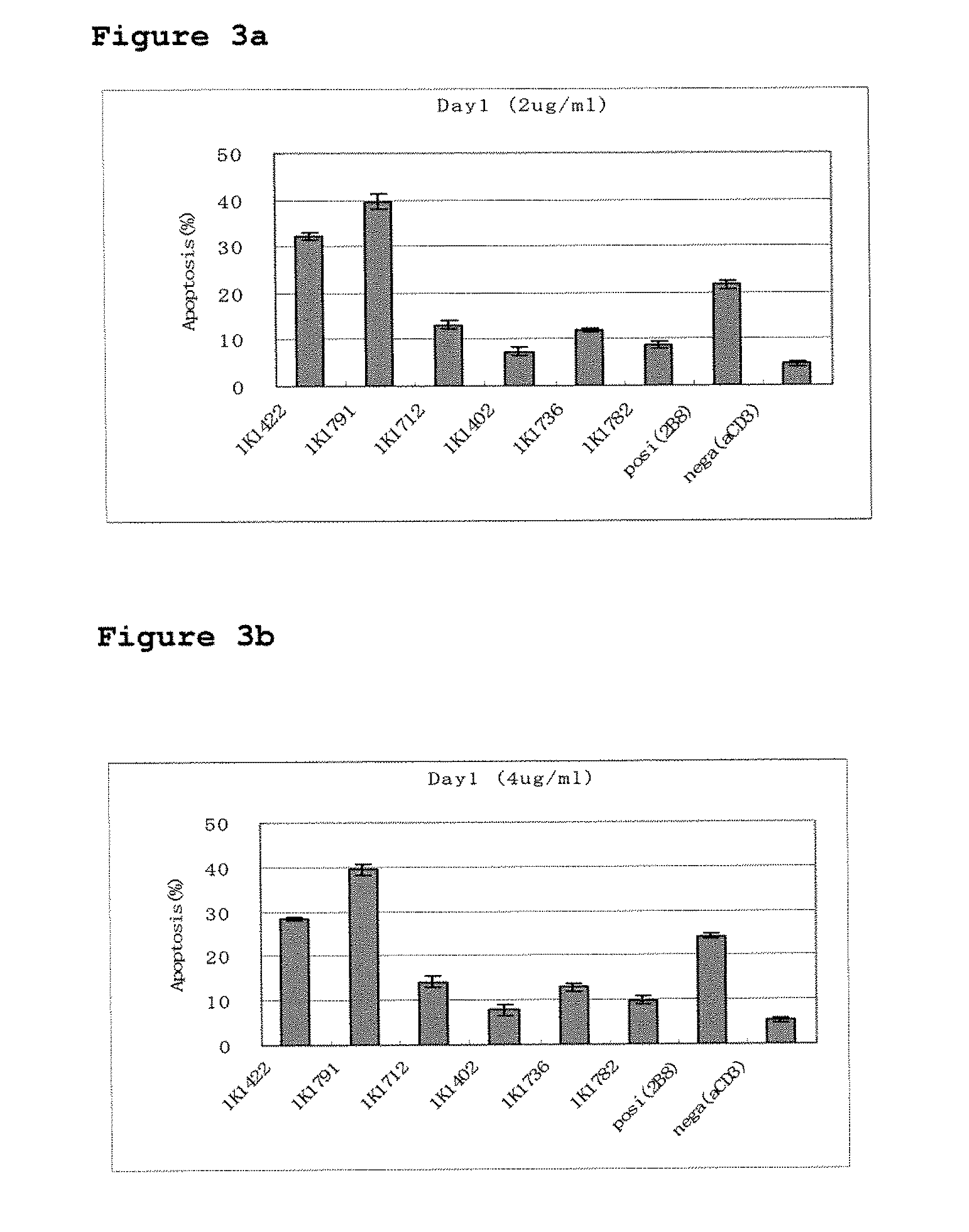Anti-cd20 monoclonal antibodies
- Summary
- Abstract
- Description
- Claims
- Application Information
AI Technical Summary
Benefits of technology
Problems solved by technology
Method used
Image
Examples
example 1
(1) Preparation of Immunization Agents for Sensitizing Mice
[0102]SB and Raji cells, which are of B-cell strains expressing CD20, were cultured in vitro.
[0103]Separately, DNA coding for the entire CD20 molecule (Multiple Choice cDNA human spleen, Origene Technologies, Inc., 6 Taft Court, Suite 100, Rockville, Md. 20850) was cloned using specific primers hCD20-S-GK-Not: aatgcggccgccaccatgacaacacccagaaattc (SEQ ID No: 25) and hCD20-E-Xba: gctctagattaaggagagctgtcattttc (SEQ ID No: 26).
The DNA was inserted into a high expression vector for mammalian cells, pNOW, (FIG. 1) and a constructed vector was used to transform CHO cells. Recombinant CHO cells (CD20 / CHO cells) displaying high levels of expression of CD20 on the cell surface were identified using FACS analysis. Staining was performed using an FITC-labeled anti-CD20 monoclonal antibody and cells were selected as high expression cell, when they gave five or more times the fluorescence intensity of SB cells.
(2) Preparation of Immunogen...
example 2
[0133]For some of the resulting clones, the base sequences of their monoclonal antibody genes in the variable region were determined. In addition, antibody binding affinities were measured and biological property tests were performed for the monoclonals produced by them, as described below.
(1) Measurement of Binding Affinity
[0134]Floating Raji cells derived from human B-cell, which express the target antigen on the cell surface, and floating Jurkat cells derived from human T-cell, which do not express CD20 antigen were used. Cells of both types were cultured in a CO2 incubator (SANYO MCO-175M) at 37° C. and at a CO2 concentration of 5% using RPMI 1640 medium (NACALAI TESQUE, Inc., Cat. No. 30264-85, Lot L4K2844) supplemented with 10% fetal calf serum (FCS) (BIOLOGICAL IND., Cat. No. 04-001-1A, Lot 815242; preheated at 56° C. for 30 minutes inactivation of the complement components). The cells were maintained by subculturing twice a week.
[0135]Measurements of the number of cells were...
example 3
(1) Measurement of Binding Affinity
[0169]Raji cells derived from human B-cell were cultured in a CO2 incubator at 37° C. and at a CO2 concentration of 5% using RPMI 1640 medium supplemented with 10% inactivated FCS. The cells were maintained by subculturing twice a week.
[0170]Cell cultures three to four days after subculturing (containing approximately 1×106 cells / ml) were centrifuged for five minutes at 1,000 rpm at room temperature to collect the cells. The cells were suspended in PBS(−) and centrifuged for five minutes at 1,000 rpm to remove the supernatant. These procedures were repeated twice for washing the cells.
[0171]The reaction with a primary antibody was performed by mixing the respective anti-CD20 antibodies (mouse antibody 2B8 as positive control antibody, chimerized antibodies, and humanized antibody C2B8) with Raji cells and subjecting the mixtures to reaction at room temperature for one hour. In the reaction, the respective anti-CD20 antibodies had twelve final conce...
PUM
| Property | Measurement | Unit |
|---|---|---|
| Molar density | aaaaa | aaaaa |
| Molar density | aaaaa | aaaaa |
| Molar density | aaaaa | aaaaa |
Abstract
Description
Claims
Application Information
 Login to View More
Login to View More - R&D
- Intellectual Property
- Life Sciences
- Materials
- Tech Scout
- Unparalleled Data Quality
- Higher Quality Content
- 60% Fewer Hallucinations
Browse by: Latest US Patents, China's latest patents, Technical Efficacy Thesaurus, Application Domain, Technology Topic, Popular Technical Reports.
© 2025 PatSnap. All rights reserved.Legal|Privacy policy|Modern Slavery Act Transparency Statement|Sitemap|About US| Contact US: help@patsnap.com



